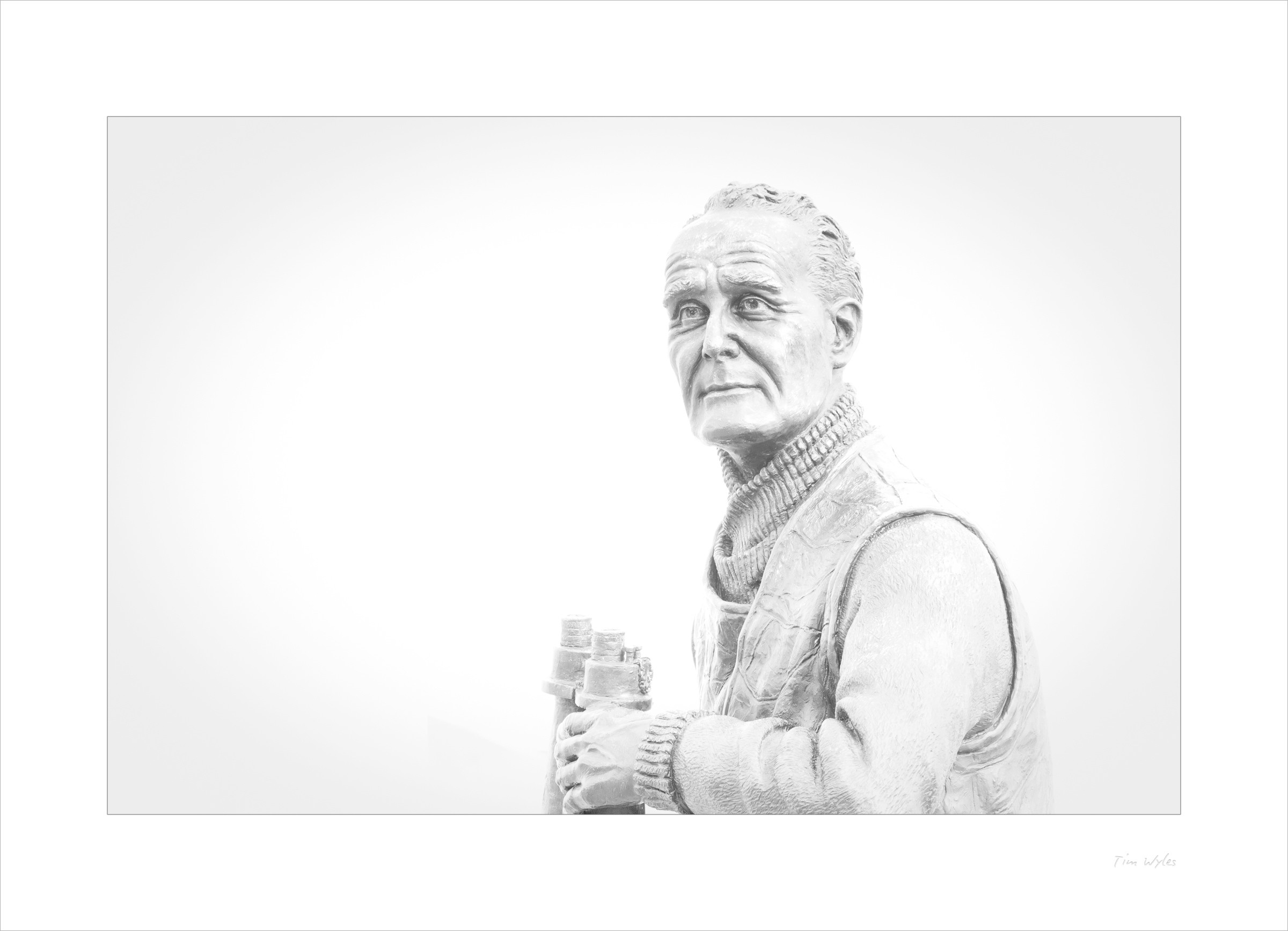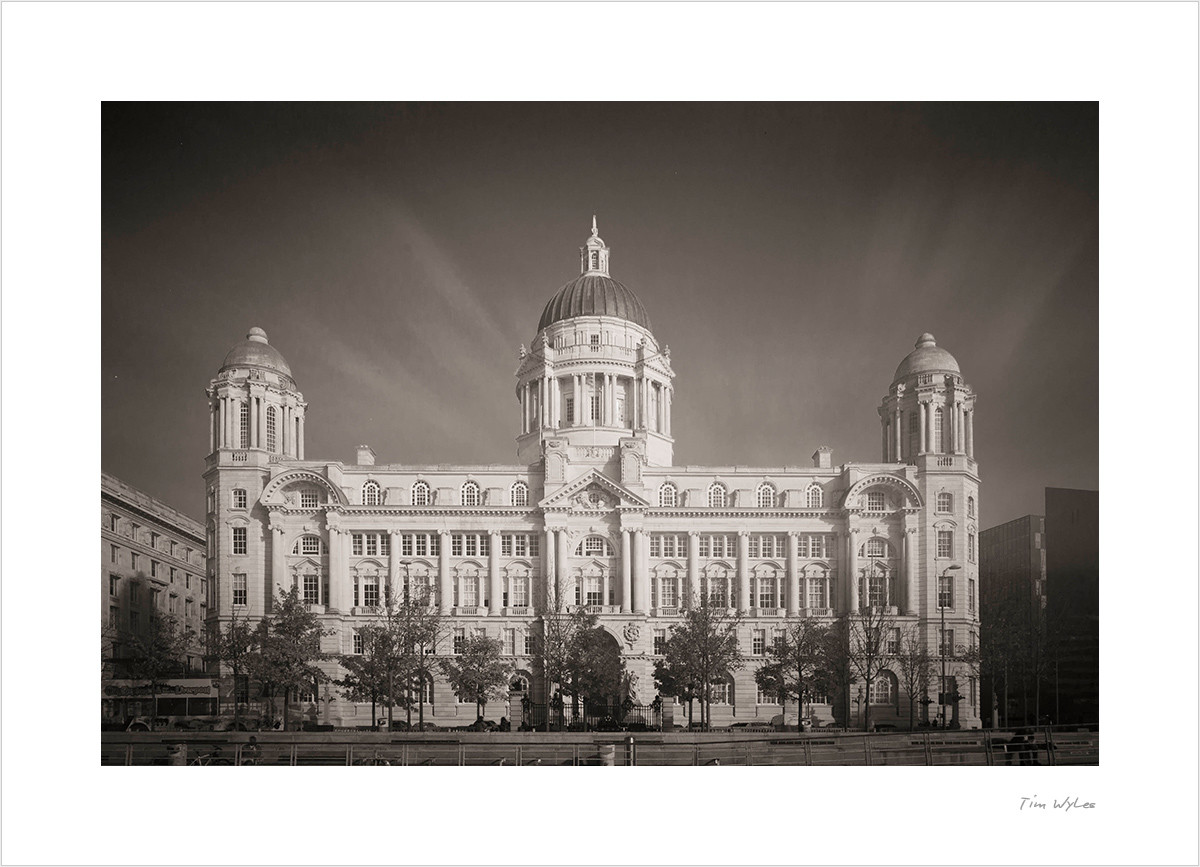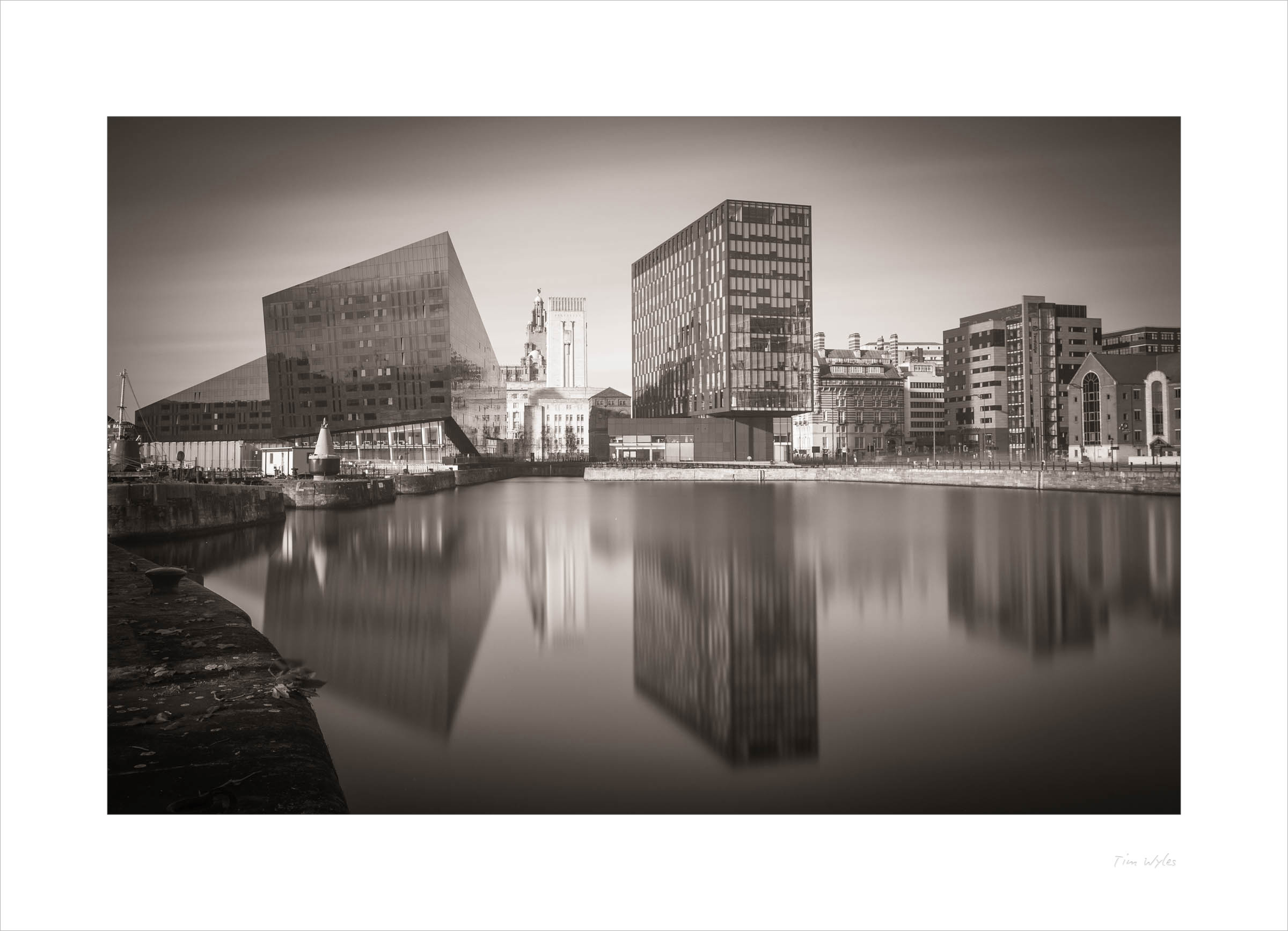Canon M6, 100 mm, ISO 100, 1/4 sec @ f/8
On the Liverpool waterfront at Pier Head is a statue of a quite remarkable man, Captain Frederic John Walker DB DSO *** Royal Navy (1896 – 1944). Walker was responsible for sinking more German U-Boats during the Battle of the Atlantic in World War II than anyone else, and had this statue unveiled in 1998 by HRH The Duke of Edinburgh. The statue is in memory of Walker, the men of his 36th Escort and 2nd Support Groups and all those who fought in the Battle of the Atlantic 1939-45.
I have taken a few pictures of this statue but I wanted to try something different, inspired by the words and attitude of Paul Sanders during a talk he gave at Digital Splash last week. I decided to try massively overexposing on a bright day. Instead of the correctly metered 1/50 s, I chose to use 1/4 s, completely blowing the sky out and rendering the statue in a way I think looks similar to a pencil drawing, the close crop enhancing Walker’s determined look.
Other than desaturation and sharpening the picture shown is as taken.



















